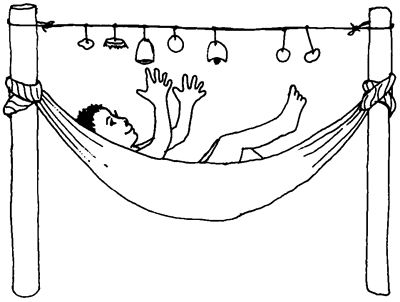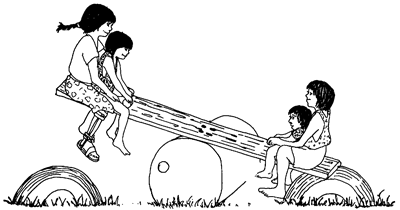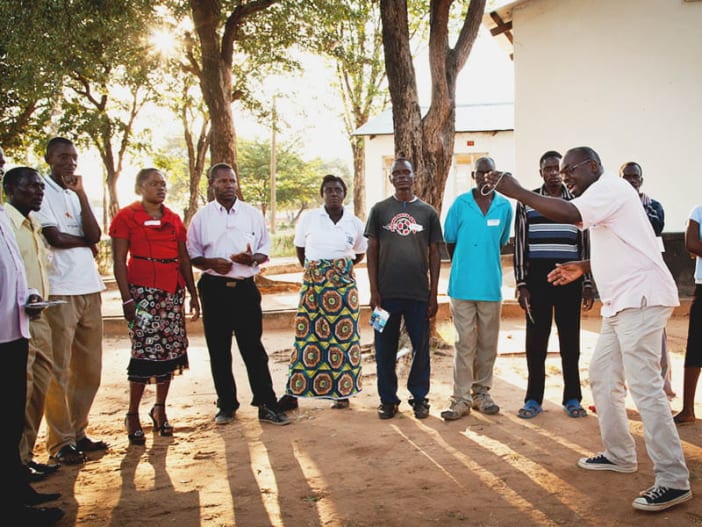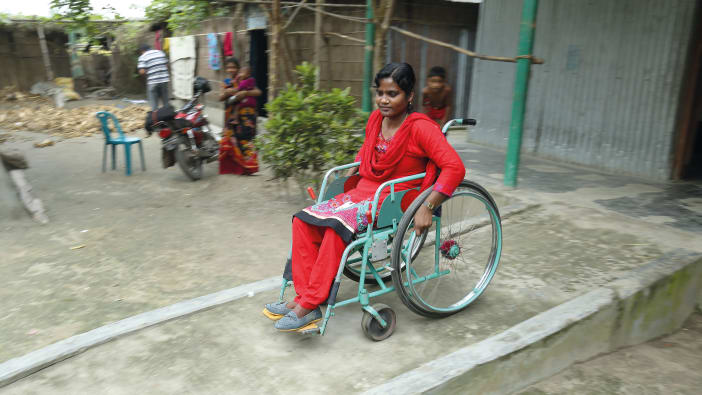The centre now works with 18 children between the ages of 2 and 14, who have severe mental and physical disabilities. The children need a lot of help, so much of the focus at the centre is on physiotherapy work, such as helping them learn to sit and move. They concentrate on stimulating the main senses: sight, sound, touch and smell. A group of staff also visit children in their homes providing healthcare and washing. A recent development is to look at the children’s educational and social needs in addition to the physical care.
Though independent, the centre receives a certain sum from the government for each child attending. But there is very little money left for expansion and development, once salaries and running costs have been paid.
Teaching equipment
The centre copies existing pieces of equipment from the West and produces them locally. Imagination is used to produce equipment such as:
- touching (tactile) boards made from wood with various things attached such as a ball, a piece of scrubbing brush, kapok, which encourages children to touch
- an old unrepairable wheelchair converted into a shower chair by taking off the seat, putting a piece of wood on it and covering it with foam
- a trampoline made by sinking an old springy bedframe into the ground and covering it with a mattress
- a seesaw made from an oil-drum and a piece of wood
- hammocks, which are very safe for rocking in
- foam shapes covered with PVC: horseshoe shapes as seats, triangular shapes that the children can lie on, and tubular ones to play with
- stencils with bright shapes and colours to decorate the rooms.
Progress comes through small changes. For example, a child will start to touch a tactile board. A child in a swing will push herself off with her feet. Achild will knock over a stack of bricks instead of just looking at it.
Work and play
One of the biggest challenges at the centre has been to educate the staff about the idea of play. In a society where work is seen as all important, the idea of play simply does not exist in adult thinking. People do not see that play, either alone or in a group, is part of social development. When a new toy is introduced – for example a container with different shaped holes in the lid for slotting shapes through – the staff will learn how to use it. Then they will give it to a child and expect them to know what to do with it. If they don’t, the toy is seen as being no good. The staff have to be shown that the toy could be used in many ways. They could take the lid off and look inside, touch it, shake it, enjoy the colours and so on. They could forget the lid completely and put it on end.
A whole change of attitude is needed so that the staff can really understand and enjoy ‘play’. This also involves encouraging the children to explore toys. Some might not even touch one unless they are encouraged. Believing that development is possible and realising how it can be encouraged, is part of the essential training that the staff need in order to be effective.










